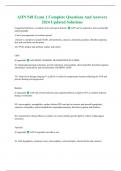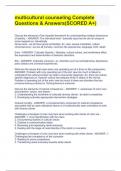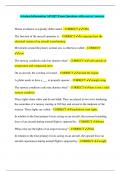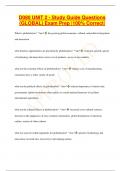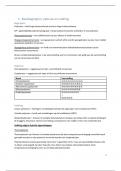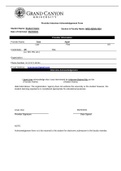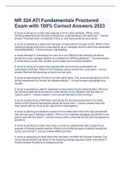Tentamen (uitwerkingen)
AHN 548 Exam 1 Complete Questions And Answers 2024 Updated Solutions
- Vak
- Instelling
AHN 548 Exam 1 Complete Questions And Answers 2024 Updated Solutions Congenital infections- essentials of dx and typical features ANS can be acquired in utero, perinatally and postnatally -Can be asymptomatic in newborn period -clinical sx complexes include IUGR, chorioretinitis, cataracts, cho...
[Meer zien]
